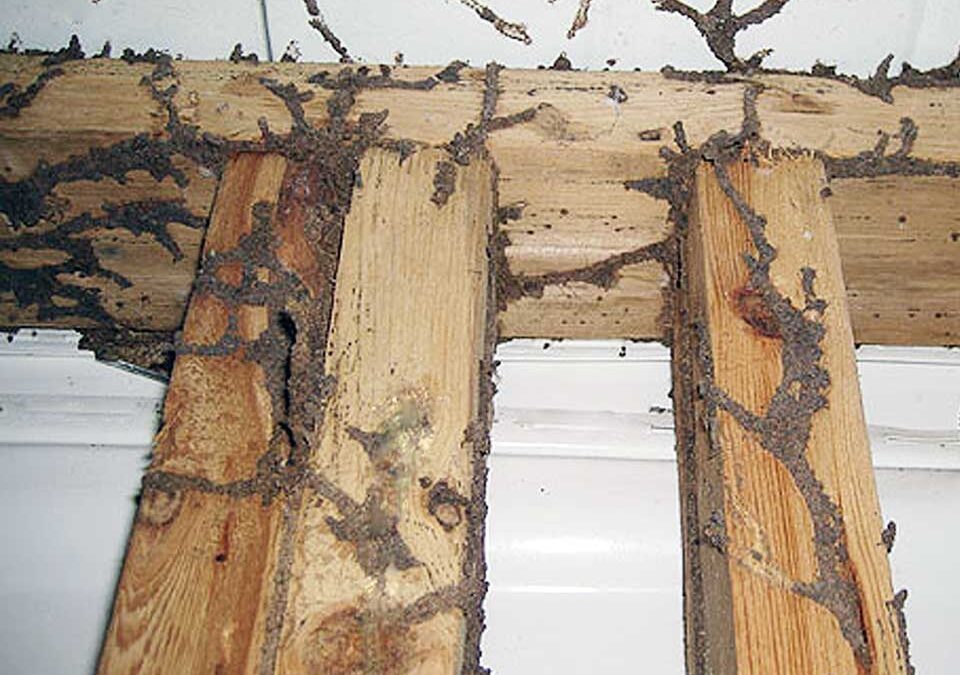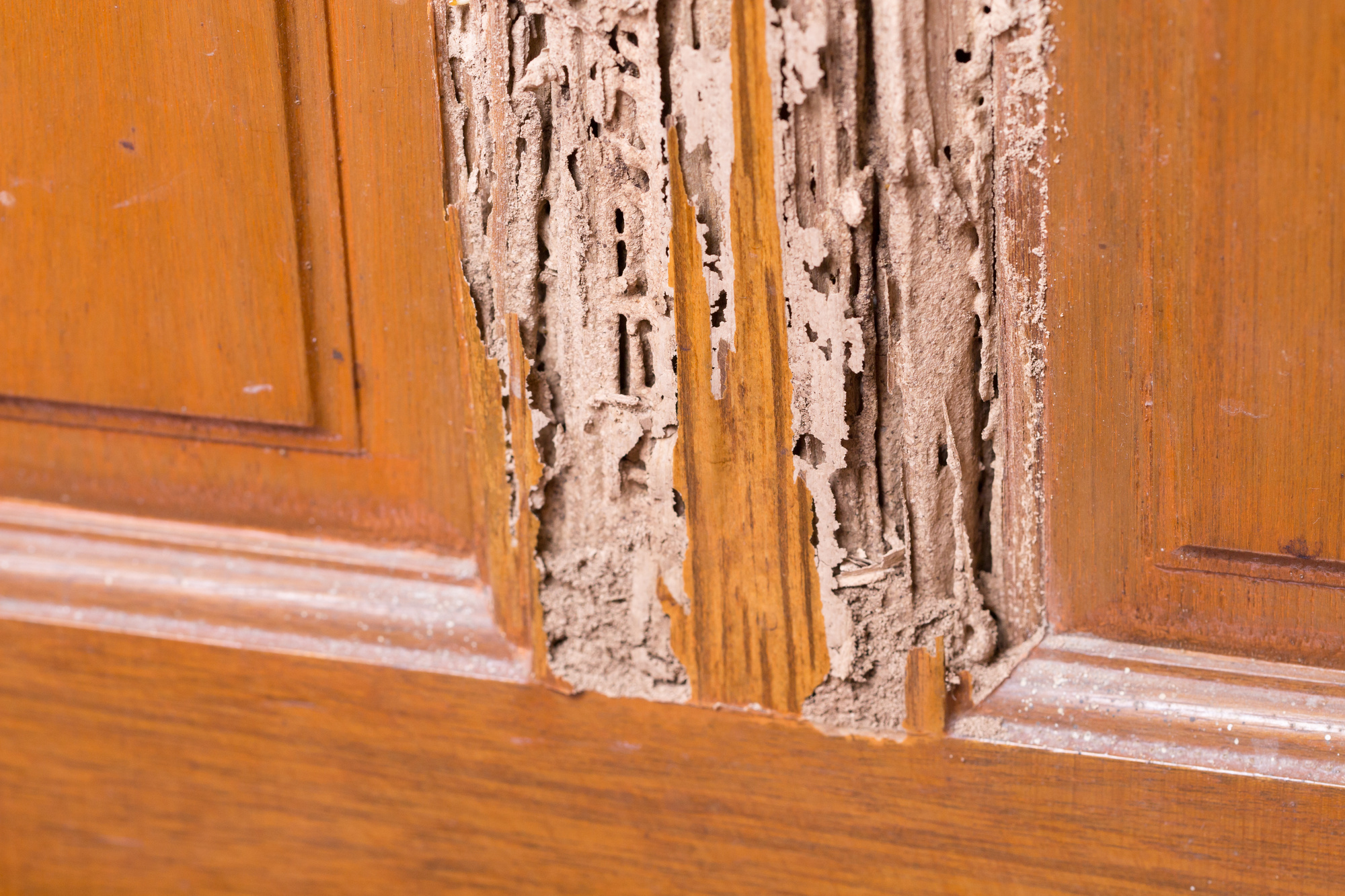Termites rank among the most damaging pests for property owners throughout Ohio, including those in Sidney. These insects quietly feed on wooden beams, floors, or other structural elements, often remaining undetected until paint bubbles, floors warp, or mud tubes show up along basement walls. By then, it is possible that entire internal sections of wood have been hollowed out, risking serious problems for anyone relying on those beams for support. Some residents attempt over the counter termite sprays or remove the mud tubes they see, hoping that this halts the infestation. However, these measures generally fail to eliminate a hidden colony in the soil or behind walls. Subterranean termites, the most common in much of Ohio, travel through earth tunnels and can nest deep below a foundation, safe from surface treatments.
When an owner or manager in Sidney discovers evidence of termites, the key to saving money and preserving structural integrity is a more complete approach. Pest Control Xperts delivers termite removal in Ohio that goes beyond the surface, locating the full scope of termite activity, then applying targeted methods to destroy the colony at its root. Families or businesses who call an experienced exterminator in Sidney gain help that includes trenching or bait stations along foundation lines, sealing or replacing rotted wood that invites termite feeding, and monitoring the property afterward to confirm no new swarm or mud tube emerges. This article will explain why termites commonly thrive in Sidney and surrounding regions, the harm they can cause if overlooked, indicators that a termite problem may be unfolding, and the advanced strategy Pest Control Xperts offers to remove termites for the long run.
Why Termites Thrive in Sidney
Termites can appear in almost any building when the conditions favor them, though certain factors in Sidney often let them multiply until a serious issue develops:
- Wood to Soil Contact
Subterranean termites primarily nest in the ground, creating mud tubes that link soil to wood. If porch supports, decking beams, or siding rest directly on soil, termites gain easy entry into the structure. Some owners install wooden boards or store firewood against an exterior wall, not realizing they are bridging the soil to interior wood. - Moisture and Damp Wood
Termites prefer moist or rotting wood. Even a small leak under a sink or near a crawl space can keep beams damp. Dampness around windows or door frames may lead to wood decay, drawing termites inside. If owners fix major leaks yet ignore minor drips, termites can still find enough moisture to thrive. - Mulch Close to Foundations
Thick layers of mulch right against exterior walls help termites move from the ground into wooden framing. Mulch and other yard debris can hold moisture next to the home or building, creating conditions favorable for termites searching for an entry path. - Delayed Recognition
Termites often feed inside wood, leaving the outer layer looking normal. By the time owners see bubbling paint or discover hollow sounds when tapping beams, damage may be advanced. Quick patching or painting over a rotting section rarely solves the hidden termite colony in the soil. - Partial Do It Yourself Attempts
Applying a standard insecticide around a basement perimeter or knocking away mud tubes might kill a few worker termites near the surface. However, the main colony or queen usually remains in deeper tunnels, continuing to produce new foragers. More thorough coverage is essential.
When these conditions remain, termite populations expand, quietly tunneling through beams or frames. Without professional removal, a colony can cause major structural harm that costs thousands in replacements and repairs.

Problems Termites Bring
Although termites do not typically pose direct health threats to people, their presence undermines property stability and can lead to major expenses:
- Weakening Internal Supports
Termites feed on cellulose inside wood, hollowing it out. Over time, floors may sag or door frames warp if extensive sections of beams are compromised. A short surface inspection might overlook internal tunnels until advanced weakening occurs. - High Repair Costs
Insurance policies often exclude termite damage. If a colony remains active for months or years, entire beams or other support structures might need replacement. The final bill for wood replacements, professional rebuilding, or extended insect treatments can be very large. - Potential Spread to Adjacent Spaces
In multi unit structures or tightly spaced properties, termites can spread through shared fences or yard lines if neighbors do not also fix conducive conditions. One building’s partial solution can fail if an adjacent area allows termite nesting to continue. - Reduced Property Value
Real estate buyers and lenders often require a termite inspection. When evidence of termite damage emerges, prospective buyers may hesitate to complete a deal or demand a substantial price cut. This can complicate the selling process. - Ongoing Anxiety
Learning that an unseen insect has been quietly eating away at beams undermines peace of mind for owners. Each small paint bubble or slight floor movement can spark worry until a trustworthy exterminator plan confirms that no termites remain.
By removing the entire colony, from the queen in hidden tunnels to foraging workers near the foundation, property owners can regain certainty that each beam and support is protected.
Signs of a Termite Infestation
Because termites stay concealed within wood or underground, owners watch for these indicators:
- Mud Tubes on Foundation Walls
Subterranean termites construct narrow, mud based tunnels as they travel from the soil into wood. Wiping them away may remove the trail, but it does not solve the colony below. If new tubes appear, it confirms continued feeding. - Discarded Wings or Swarmers
When a colony matures, it sends out winged termites, sometimes called swarmers. They typically congregate near windows or door frames, leaving behind small translucent wings. People sometimes mistake them for flying ants. - Bubbling Paint or Hollow Wood
Termites eat wood from within, occasionally leaving paint or wallpaper looking normal on the surface. Owners who notice bulges, peeling, or hollow sounding beams may suspect an active colony behind the facade. Spot fixes do not address the root problem. - Sawdust or Frass Near Damp Wood
Some termites push out waste or bits of wood through small holes. Small piles of debris near baseboards or windows can be an indicator. If left undisturbed, the colony continues enlarging in secrecy. - Soft or Warped Floors
In advanced infestations, subfloors can weaken, leading to spongy or sagging areas. Tapping these sections might yield an empty or hollow sound, confirming internal destruction has taken place.
Observing any of these clues suggests that owners call an exterminator in Sidney quickly, preventing additional feeding that could amplify repair bills.

Why Professional Coverage Is Essential for Termite Removal
Some attempt short term or do it yourself measures. However, specialized knowledge and equipment drive lasting results:
- Extensive Inspection
A trained inspector explores basements, crawl spaces, yard edges, porch supports, or any place wood meets soil. Confirming how termites enter and which sections they feed on clarifies the scale of the infestation. - Correct Treatment Options
Subterranean termites respond best to either a liquid barrier around foundations or in ground bait stations. Certain foam or dust injections may also be applied if a nest is found inside a wall. Standard store products rarely penetrate deep enough. - Safe, Targeted Application
Rather than spraying random chemicals that might affect families or pets, professionals trench soil near foundations or place baits exactly where termites travel. People can generally stay indoors, avoiding direct contact with fresh treatments until they are safe. - Moisture and Wood Control
Termites thrive on damp or rotted wood. If small leaks, rotten posts, or direct wood to soil contact remain, new colonies may move in even after the current nest is destroyed. A thorough approach addresses these vulnerabilities. - Monitoring and Rechecks
After the main application, a second check ensures no fresh mud tubes, swarmers, or foraging evidence reemerges. If any signs persist, further steps finalize coverage. This level of diligence outperforms casual or incomplete attempts.
Pest Control Xperts Termite Removal Plan
Our focus on termite removal in Ohio combines advanced detection, targeted treatments, and long term prevention:
- Consultation and Inspection
An exterminator in Sidney hears about any paint bubbling, sightings of swarmers, or suspicious mud tubes. Next, the inspector checks foundations, basements, or yard lines for the extent of the termite presence, verifying species and locating main entry routes. - Product Selection
Depending on whether a property suits liquid barriers, baits, or foam injections, we choose the most effective termite treatment method. Subterranean termites commonly respond to soil trench applications or bait station setups, ensuring worker termites bring the product back to the nest. - Careful Treatment
Instead of broad spraying, we apply termiticide in soil trenches around the building’s perimeter or place baits underground that lure foraging termites. Families stay home, simply avoiding new treatment zones until cleared for safety. The approach kills workers and eventually the queen. - Moisture and Wood Fixes
Fixing small leaks, replacing damp or rotted wood, or removing direct wood to soil contact is vital. Some owners install gutter systems or regrade soil near siding to limit moisture that draws termites. Without these repairs, new colonies can return. - Monitoring and Follow Up
After a few weeks, a second check verifies no new mud tubes or paint bubbles have appeared. If leftover pockets remain, additional steps ensure no queen or satellite nest survives. Success is confirmed when no evidence is found for an appropriate period.

Reasons Sidney Residents Trust Pest Control Xperts
People in this community rely on our termite removal in Ohio for specific benefits:
- Local Expertise
An exterminator in Sidney is familiar with local building materials, weather patterns, and the ways termites typically enter these structures. This regional insight speeds up identification and solution deployment. - Complete Colony Elimination
We focus on removing the entire colony, not just the visible worker termites or a single mud tube. By reaching the queen, we break the cycle of egg laying, ensuring an end to new generations. Owners do not suffer illusions undone by leftover nests. - Safe, Targeted Methodology
We avoid saturating floors with chemicals. Instead, we place termiticide precisely along soil lines or in structural voids, letting families or staff remain indoors without extensive disruption. Once areas dry, normal routines resume. - Moisture and Exclusion Advice
Killing current termites is only half the job. Repairing minor leaks, removing rotted beams, or ensuring no wooden elements rest directly on soil guards against future infiltration. That synergy elevates our approach beyond short fixes. - Ongoing Support
If new mud tubes or swarmers appear, we revisit the property to address any overlooked sites. We declare victory only when no fresh termite signs show up, giving owners long term peace of mind. - Professional, Courteous Service
We schedule efficiently, respect each property, and communicate every step clearly. Residents across Ohio frequently refer us to others facing termite threats, confident in our proven track record of success.
Contact Pest Control Xperts for Same Day Service
If someone in Sidney notices bubbling paint on wooden supports or small mud tubes along basement walls, it may be time to act before more serious internal damage occurs. Pest Control Xperts provides termite removal in Ohio designed to eradicate the hidden colony, from worker termites traveling in soil tunnels to the queen in the main nest. An exterminator in Sidney studies each likely entry point, chooses either liquid barriers or in ground bait stations, and explains how to limit moisture or remove direct wood to soil contact so new termites cannot appear.
Call Pest Control Xperts right away for same day service and stop the gradual weakening of floors, frames, or other wooden areas. Through a combination of targeted treatments, practical dryness and structural recommendations, and a follow up approach that confirms no leftover nest remains, owners secure their property from these destructive pests. Termites that once silently devoured beams find nowhere to hide, saving property owners from expensive replacements or ongoing worry about hidden insects chewing inside. Working with a skilled exterminator can be the difference between minor wood repair and large scale reconstruction, preserving both finances and long term security.
